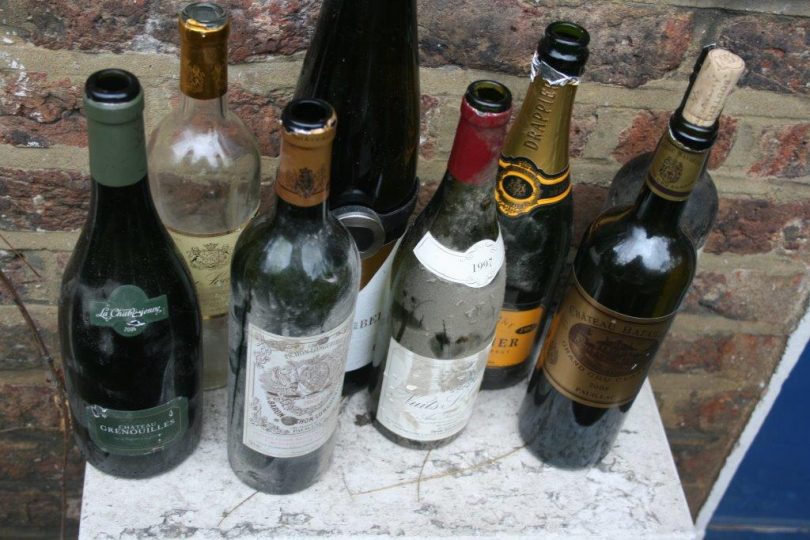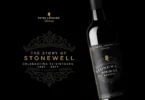Hard Cheese
Posted: 3rd January 2017
So that’s it for 2016. The family was united again, but it was never going to be a really happy Christmas. It was the end of a very bad year and as yet, 2017 offers little solace. Even from the wine point of view, nothing has been replenished in what passes euphemistically for a cellar; we are just living on our fat. Still, we still put a brave face on things, don the party hats that tumble from a bargain box of crackers and celebrate as best we may. The Perrier Jouët on Christmas Eve was deemed too blowsy and the usual Devon lobsters were absent from the feast, but we did well for all that: we scorned Canadian interlopers and the excellent Persian fishmonger in Archway found us a beautiful turbot instead. We started with some deep-fried cuttlefish, then I made a little beurre blanc for the turbot (perhaps overdoing the vinegar?), some braised turnips and a potato purée and with that we drank a bottle of Grand Cru Chablis – a 2006 Château des Grenouilles from the excellent Chablisienne cooperative. I found it annoyingly oaky at first, but it opened out quite a lot, and it might have been even better had I decanted it. The usual more-than-welcome friend brought the cheese: a lovely Vacherin Mont d’Or, a big piece of Montgomery cheddar, a bit of Colston Bassett Stilton and some tomme. I had decanted a bottle of 1997 Nuits St Georges Aux Saint Julien from Daniel Bocquenet, this was wonderfully opulent. The friend brought a couple of bottles too and we opened the 2006 Château Batailley (the 1998 was terribly good last Christmas), but sadly it was irredeemably corked. And then there were two bûches my wife had made – one with coffee, the other a chestnut cream. With that we had a rather lacklustre 2002 Château Suduiraut which seemed distinctly short on noble rot. To finish there was the 1987 Burmester Colheita port, which was lovely in its way – very mild-mannered and understated, lacking that more muscle-bound character you would find in old ‘British’ tawny ports which are ‘refreshed’ with younger wines to give them ‘grip’. I had another glass of it when I got in from Midnight Mass at 1.30 a.m.
There were just the four of us on Christmas Day (one of whom doesn’t really drink – yet). After a walk on a damp and muggy Heath I made a fire and opened a bottle of 1992 Drappier champagne. This was possibly the best wine we had this Christmas, wonderfully long and filigree: a champagne to savour. Later we had a snack of some lambs’ sweetbreads in breadcrumbs, to replace the more usual homemade foie gras terrine. There was a rib of well-hung heifer meat and I decanted some 2003 Château Pichon-Longueville Baron. It was a tremendously well-turned wine from a very difficult year, classical in its way but something you loved more with your head than your heart. The beef came with the usual red cabbage and roast potatoes; and we ate more of the cheese and some wonderful meringue snowmen stuck together with crème aux marrons. The only fault I could find with them was that they looked horribly like Boris Johnson. We retired upstairs to watch Scrooge taking with us the decanter of port and the remains of the Sauternes.
The family then departed for Devon leaving me to a frigid house and leftovers. They were back for New Year’s Eve when I made the usual Italian festive meal of a zampone with lentils, potato purée and tomato passata. I normally spend the last hours of the year alone with a bottle of old Barolo but a very welcome magnum of 2015 Beleda arrived from the Cantine Rallo in Marsala and we drank that, its nervous acidity coping manfully with the sausage and lentils, and so we proceeded to midnight, and 2017.
Shortly before Christmas I received a copy of the Oxford Companion to Cheese, edited by Catherine Donnelly. I had been very anxious to see this. Many years ago a woman in New England whose publisher husband had once offered me a wine book, inveigled me into writing entries on Germany, Austria and Hungary for a similar project. There were months of frustration drumming up samples from bemused Magyars and trying to find something fair to say about the rather imitative and lacklustre cheeses of Austria. The compensation – if there was any – came in the form of aged German and Austrian Bergkäse. Meanwhile there was no sign of any money and I began to suspect the editor had never actually signed a deal with OUP and that she was hoping she could secure the contract by packaging the work that I (and possibly other suckers) had written for her. After a quick search I noted to my alarm that the woman had been blacklisted by the New York Writers’ Guild for failing to pay writers and I eventually contacted the publishers in Oxford in the hope they might reassure me. OUP denied all knowledge of her and the book, but cautiously referred me to New York which ran its own operation. I can’t remember if New York ever gave me an acceptable answer, but by that time my patience had snapped and I threw in the towel. I never heard another word from the so-called ‘editor’ of the Oxford Companion to Cheese. I need not add that her name was not Catherine DonnellyThe project was a good one and I turned the pages with interest.
I noted that some familiar writers had been assigned to individual areas – Darina Allen, Andrew Dalby, Juliet Harbutt, Ursula Heinzelmann, Paul Kindstedt (the author of an excellent small volume on the history of cheese), Patricia Michelson, Jill Norman, Francis Perceval and Bee Wilson – but I have to say I was very quickly disappointed: the editor has opted for a technical manual rather than a conventional anthology of cheese, and placed the centre of gravity very firmly in the United States. I am sure there are growing numbers of good cheeses there, but we don’t really see any of them here. Nor do they have the run of the European stable, as the US is subject to very draconian measures preventing the importation of good, unpasteurised European cheeses or indeed old Mimolette – because they have decided it is somehow ‘dirty’. The listing of so many American cheeses comes at the expense of European cheeses, very few of which seem to have been accorded more than a mention in a collective entry. I shall naturally look for place for it on my shelves, but I suspect that it will not be consulted nearly as often as Rance or Androuet or any number of other well-thumbed books on the subject.







